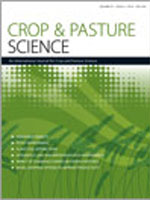Iron (Fe) deficiency is frequently encountered on calcareous soils and is usually overcome by application of Fe fertilisers. In the present study, maize plants (Zea mays L. cv. Merit) grown in calcareous soil were foliar-sprayed with or without 100 µg Fe g–1 in the forms of Fe3O4 nanoparticles (NPs) and ethylene diamine-N,N-bis(2-hydroxyphenylacetic acid) Fe sodium complex (Fe-EDDHA), at different growth stages. Uptake and translocation of Fe within the plant were monitored by atomic absorption spectroscopy, vibrating sample magnetometer, dynamic light scattering and transmission electron microscopy, and physiological parameters were evaluated. Iron treatments improved maize photosynthesis and hydrogen peroxide and superoxide anion scavenging capacity and lowered the rate of membrane lipid peroxidation. Iron treatment also accelerated vegetative growth and caused earlier entrance to the generative phase. Differences between ameliorative effects of Fe-EDDHA and Fe3O4 NPs were particularly noticeable in the generative growth phase. Improvement of calcium, Fe2 , total Fe, and ferritin contents were more pronounced in Fe3O4 NPs treatments (164%, 200%, 300%, and 200% of the control, respectively). Improved growth of maize treated with Fe3O4 NPs can be attributed, at least in part, to the increase in ferritin and its critical role in maintenance of Fe homeostasis and balance of the plant redox system.
How to translate text using browser tools
28 June 2016
Effect of Fe3O4 nanoparticles and iron chelate on the antioxidant capacity and nutritional value of soil-cultivated maize (Zea mays) plants
Mahboobeh Jalali,
Faezeh Ghanati,
Ali Mohammad Modarres-Sanavi
ACCESS THE FULL ARTICLE

Crop and Pasture Science
Vol. 67 • No. 6
June 2016
Vol. 67 • No. 6
June 2016
antioxidant capacity
iron chelate
Iron deficiency
iron nanoparticles
reactive oxygen species




